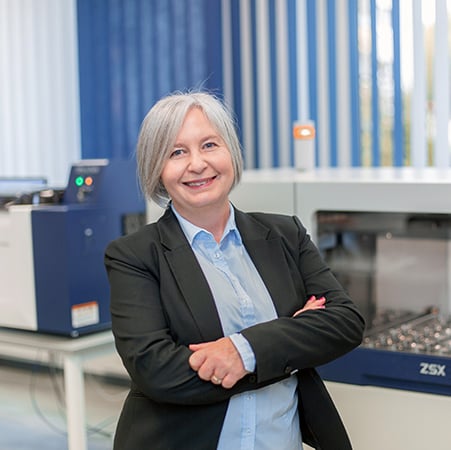Application Note BATT1021
Introduction
Sulfide solid electrolyte materials, of which LPS and argyrodite are leading examples, react with moisture in the air. As such, they need to be treated without exposure to the air. Composition analysis using XRF was made possible by sealing pellets inside a vacuum pouch cell. While ICP analysis is used for composition analysis, sulfur and halogen are prone to volatilization, necessitating complex pre-treatment. With XRF, analysis can be performed with material still in powder form, making for swift, convenient analysis.
Composition analysis
- Analysis: Solid state electrolyte
- Analysis method: Standardless FP analysis method
- Use: Improving ionic conductivity
- Analyzed materials: LPSCl argyrodite

This figure shows the production method for a vacuum pouch cell. A 10 mm pellet is inserted in film and then vacuum-sealed.
|
Synthesis conditions |
P |
S |
Cl |
|
|
Target composition |
1.00 |
4.50 |
1.50 |
|
|
A |
Mechanochemical Milling |
1.00 |
4.49 |
1.52 |
|
B |
Heating for 2h at 550°C (Vacuum) |
1.00 |
4.30 |
1.44 |
|
C |
Heating for 6h at 450°C (Vacuum) |
1.00 |
3.87 |
1.55 |
This table illustrates composition analysis results in synthesis conditions.
Conclusion
Synthesis conditions for argyrodite-based LPSCI were examined. Through a comparison with target composition, it was ascertained that at 550°C, S and Cl volatilized, and that, at 450°C as well, S volatilized after being heated for a long period of time. As this shows, using XRF analysis without exposure to the air enables analysis consistent with intended composition in a short amount of time.

